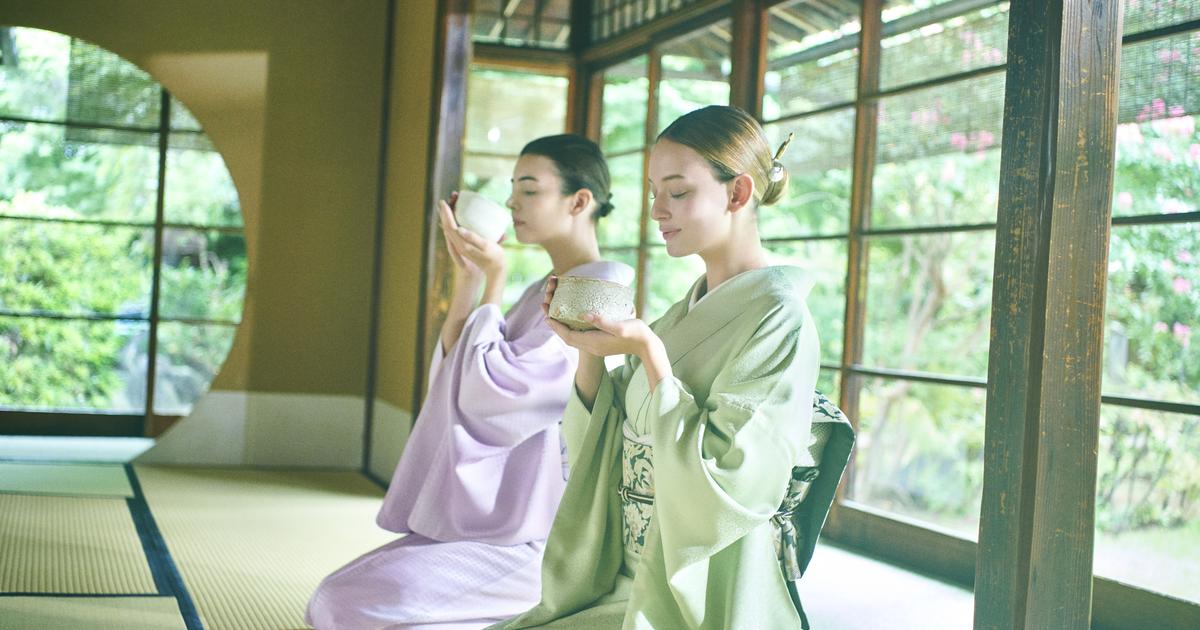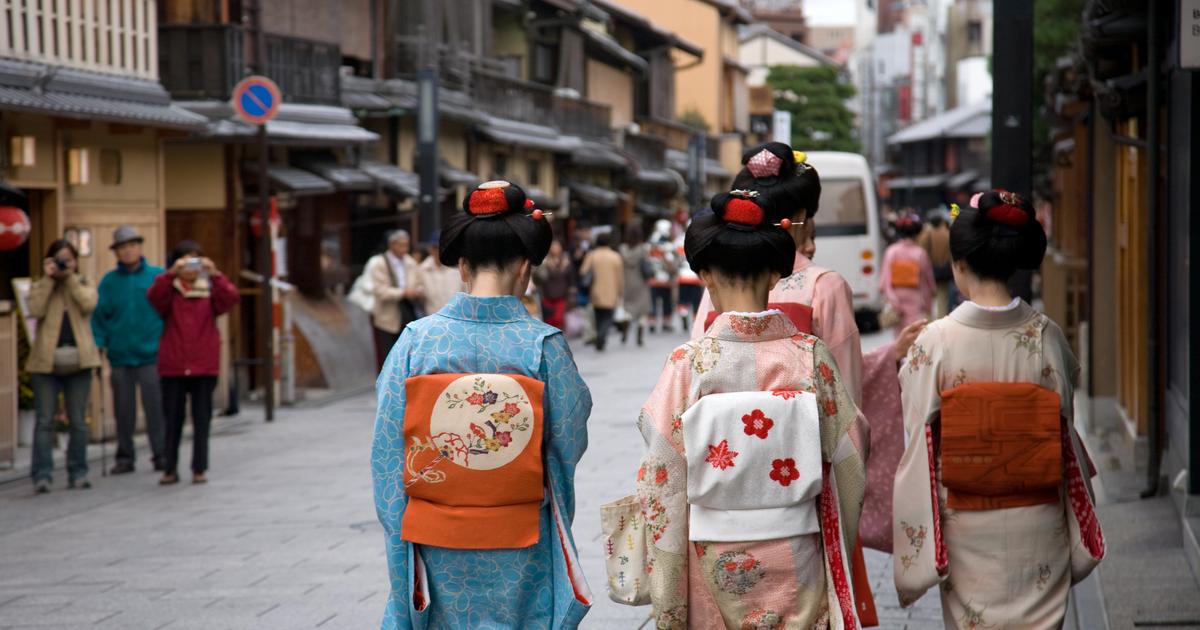Geisha in Tokyo: The training of traditional Japanese entertainers is complex and expensive. You need to master multiple instruments, calligraphy, singing and the tea ceremony. The corona crisis endangers the job.
Photo: KIM KYUNG-HOON / REUTERS
Maki, Mayu, Koiku and Ikuko on their way to work: The geishas in Tokyo's Akasaka district were unemployed for months due to the Japanese state of emergency. Now you have to come to terms with the rules of distance.
Photo: KIM KYUNG-HOON / REUTERS
Ikuko moved to Tokyo in 1964. "There were more than 400 geishas in Akasaka when I came, so many that I can't remember their names. But times have changed," says the 80-year-old. Now there are only 20 and not enough jobs in the district to train apprentices.
Photo: KIM KYUNG-HOON / REUTERS
Ikuko is on the phone in her apartment: She fears that some geishas will give up due to the long pandemic. "Now the worst is the worst," she says. "How are we going to get through? Our bodies and souls are challenged."
Photo: KIM KYUNG-HOON / REUTERS
Kimonos in Ikuko's apartment: "Our income has dropped to zero," she says. "I have a little money, but it was very difficult for the younger ones. The geisha association helped with the rent."
Photo: KIM KYUNG-HOON / REUTERS
Make-up Box: Less money is being spent in the corona crisis and many people are skeptical about spending hours in the closed traditional rooms where geishas entertain them.
Photo: KIM KYUNG-HOON / REUTERS
Make-up artist Mitsunaga Kanda and wig stylist Yurie Hatanaka work with masks: "All my events have been canceled," says Kanda. "We touch the geishas and we are very close, although we are not talking - we are now very aware of that."
Photo: KIM KYUNG-HOON / REUTERS
Koiku does makeup on Mayu: The engagements of geishas have decreased by 95 percent due to Corona. And there are new rules: no beverages for customers, no touch, not even to shake hands, and two meters away.
Photo: KIM KYUNG-HOON / REUTERS
Shoichi Sanagashi helps the dancer Tokijyo Hanasaki with the dressing room. Like the geishas, the dancers, makeup artists, wig stylists and kimono dresses fear that the corona virus could further endanger their niche professions.
Photo: KIM KYUNG-HOON / REUTERS
Kimono dressing room: The dress of the geisha differs from the traditional women's kimonos - the suzohiki is very long and mostly kept in muted colors. The geishas can hardly wear masks because of their elaborate wigs.
Photo: KIM KYUNG-HOON / REUTERS
Ikuko sits fully dressed and made up in front of a mirror in her living room. She will host a party with other geishas in the Japanese luxury restaurant Asada.
Photo: KIM KYUNG-HOON / REUTERS
Koiku, Maki and Ikuko are waiting for a taxi to take them to a gig. Geishas' lessons and kimonos are expensive and their pay depends on their popularity. Some skills, such as witty conversation, that are popular with older geishas like Ikuko, require a lot of practice.
Photo: KIM KYUNG-HOON / REUTERS
Asada restaurant employees wear protective masks while they stand on the street with Ikuko, waiting for more geishas. As freelancers, the geishas can apply for one million yen (around 8,000 euros) in government subsidies.
Photo: KIM KYUNG-HOON / REUTERS
Koiku and Mayu enter the restaurant: "When you sit close together, you can talk with feeling, the passion comes through," says Ikuko. "If you're two meters apart, the conversation breaks down."
Photo: KIM KYUNG-HOON / REUTERS
Mayu (l.) And Koiku (r.) Are waiting for their guests. "We are arranging the event in the largest possible space," said Shota Asada, owner of the restaurant. "We're doing everything we can to keep this culture alive."
Photo: KIM KYUNG-HOON / REUTERS
Koiku (l.) And Mayu (r.) Are preparing for a photo shoot. "My father didn't understand what geishas are. He thought it had something to do with prostitution. He was so against it that I thought it would tear the family apart," says 47-year-old Mayu. After six years she just left. "When he went to our first performance and saw how hard we were working, he came backstage, got on his knees and bowed deeply. Now he's a huge fan."
Photo: Kim Kyung-Hoon / REUTERS
Koiku, Maki, Ikuko and Mayu perform a dance for the photographer: Mayu was afraid during the exit restrictions. “I went through my photos and sorted my kimonos,” she says. "The thought of a second wave is terrifying."
Photo: KIM KYUNG-HOON / REUTERS
Mayu, Maki, and Koiku practice a dance routine during their geisha class. "You are beautiful in a special way," said ex-geisha Michiyo Yukawa. "To make this go away would be sad."
Photo: KIM KYUNG-HOON / REUTERS
The geishas having lunch together in Ikuko's apartment. Although the old capital Kyoto is best known for geishas, Tokyo also has six geisha districts of its own - including Akasaka. There were 120 geishas there 30 years ago, today there are only about 230 in all of Tokyo.
Photo: KIM KYUNG-HOON / REUTERS
abl / Reuters














